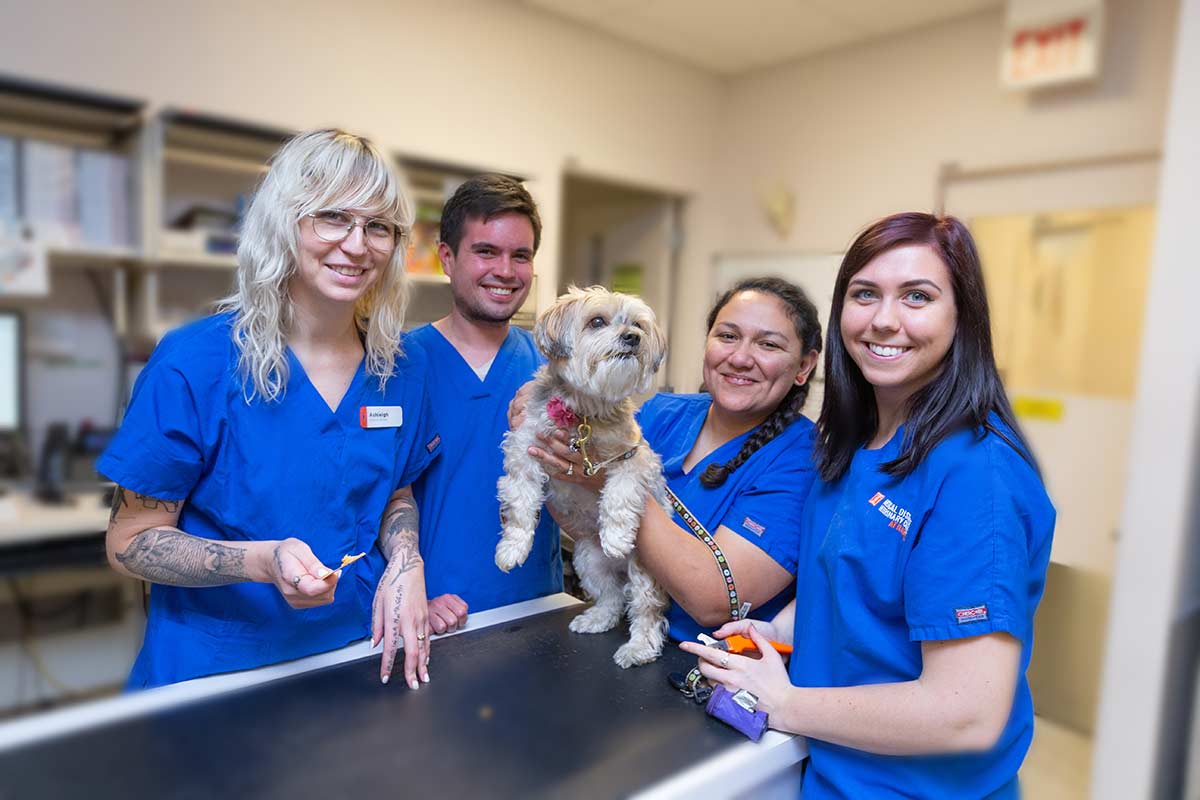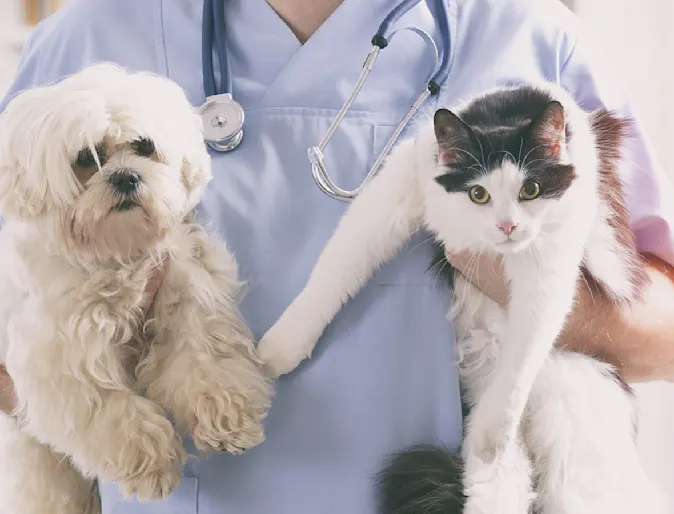How to Prepare Your Pet and Home for canine tplo surgery Recovery
How to Prepare Your Pet and Home for canine tplo surgery Recovery
Blog Article
Everything About Vet Surgical Treatment: Recognizing the Importance of Expert Care for Your Family pets
Vet surgical treatment is a crucial part of family pet medical care. It includes numerous procedures, from routine elective surgeries to urgent treatments. Comprehending the complexities of these surgeries can help pet owners make educated choices. The prep work, execution, and recuperation stages are important for ensuring the health of animals. With correct knowledge, owners can navigate the intricacies of vet treatment. What variables should be considered prior to a pet undergoes surgical procedure?
Kinds Of Vet Surgeries
When a pet dog needs medical treatment, understanding the various sorts of vet surgical treatments can aid pet proprietors make informed decisions. Veterinary surgical treatments can be extensively categorized right into three major kinds: optional, urgent, and emergency situation surgical treatments. Elective surgical procedures, such as spaying or neutering, are prepared treatments that are not immediately life-threatening. Immediate surgeries, like those for international body removal, need to be carried out soon but are not deadly in the minute. Emergency situation surgeries, such as those dealing with extreme injury or inner blood loss, are important and need instant attention.Additionally, surgeries can vary in intricacy, ranging from minimally intrusive laparoscopic treatments to much more comprehensive open surgical treatments. Each kind of surgery lugs its own threats and recuperation processes. Understanding these classifications allows family pet owners to take part in meaningful conversations with vets, leading to much better end results for their precious pets.
Preparing for Your Animal's Surgical treatment
Planning for a pet dog's surgical procedure entails a complete list to assure all essentials are covered. Efficient communication with the veterinarian is crucial for comprehending the treatment and any kind of needed pre-operative steps - 24 hour vet near me. Additionally, having clear post-operative care guidelines will aid proprietors offer the most effective assistance for their recuperating animals
Pre-Surgery Checklist Basics
Guaranteeing a smooth medical experience for a pet dog calls for mindful prep work and attention to detail. A pre-surgery list is important for family pet proprietors to comply with. Initially, validating the arranged surgical treatment date and time is important. Owners should additionally verify that their pet has actually not eaten according to the veterinarian's directions, commonly for 8-12 hours before surgical treatment. Collecting required medical documents, including inoculation history, is necessary for the vet's evaluation. It is also suggested to prepare a comfortable space in the house for the family pet's recovery after surgical treatment. Lastly, proprietors must have a prepare for transportation to and from the veterinary clinic, making certain that the animal is safe and comfy throughout the trip. Adhering to these actions can greatly enhance the surgical experience.
Interacting With Your Veterinarian

Reliable interaction with the vet is crucial for an effective surgical experience for family pets. Owners should be prepared to discuss their family pet's medical background, including any kind of pre-existing problems, drugs, and allergic reactions. This information aids the vet evaluate risks and tailor the surgical strategy as necessary. Furthermore, family pet owners must ask questions pertaining to the procedure, anesthetic, and expected end results to assure they completely understand the process. Making clear any kind of doubts can ease anxiousness for both the family pet and the proprietor. It is additionally vital to connect any behavior modifications or problems observed in the pet dog leading up to the surgical treatment. Ultimately, clear discussion promotes trust fund and partnership, making sure that animals obtain the most effective feasible treatment throughout their surgical trip.
Post-Operative Treatment Instructions
After discussing the surgery with the veterinarian, family pet proprietors need to concentrate on post-operative treatment directions to help with a smooth recuperation for their family pets. These instructions generally include keeping track of the surgical website for indicators of infection, such as inflammation or discharge. Family pets may require to be maintained calm and constrained to stop extreme motion that could interfere with healing. Discomfort monitoring is essential, so owners must comply with the vet's guidance on administering medications. In addition, nutritional restrictions might be suggested to prevent stomach upset. Routine follow-up consultations are essential to assure appropriate recovery and address any problems. By sticking to these post-operative care instructions, pet dog owners can significantly contribute to their pet's recovery and total health.
The Surgery Explained
The medical process for pets encompasses essential actions that guarantee their safety and healing. Pre-surgery preparations are necessary for decreasing threats, while post-operative care standards play a crucial duty in advertising recovery. Recognizing these elements assists pet owners navigate the medical experience a lot more efficiently.
Pre-Surgery Preparations
Before a family pet undergoes surgical treatment, several crucial prep work have to occur to ensure a feline hospital risk-free and successful treatment. First, a complete vet examination is necessary to evaluate the animal's total wellness and identify any kind of potential threats. This may include blood examinations, imaging, or other diagnostics. The vet will also go over anesthetic alternatives customized to the family pet's specific requirements. In addition, family pet owners are commonly advised to withhold food and water for a defined time before surgical treatment to lessen the threat of problems throughout anesthesia. It is necessary for proprietors to offer a complete case history, including any type of medicines or allergies, making certain the medical team has all needed information. Proper interaction and adherence to pre-surgery guidelines can substantially improve the result of the procedure.
Post-Operative Treatment Guidelines
Appropriate post-operative treatment is necessary for guaranteeing a pet's recuperation complying with surgery. After the treatment, pet dogs should be kept an eye on carefully for any kind of signs of difficulties, such as excessive blood loss, swelling, or uncommon actions. It is important to comply with the vet's directions pertaining to medications, consisting of discomfort relievers and prescription antibiotics. Family pets need to be kept in a quiet, comfy atmosphere to reduce stress and advertise healing. Restricting activity is vital; short, leashed walks may be needed, yet leaping or running ought to be prevented. Regular follow-up visits ought to be arranged to assess the healing process. Furthermore, the medical site should be maintained clean and dry, with any indications of infection reported to a vet quickly. Following these standards improves healing end results.
Anesthetic and Pain Administration
Reliable anesthesia and pain management are important elements of vet surgical procedure, making sure that family pets remain comfortable and secure throughout the treatment. Veterinarians analyze each family pet's individual needs, thinking about aspects such as age, weight, health and wellness condition, and the kind of surgical treatment being performed.Anesthesia protocols normally include a combination of pre-anesthetic medicines, induction agents, and inhalant anesthetics, allowing for precise control over the pet's degree of consciousness. Monitoring during surgery is essential; vets continually observe crucial indications to attend to any prospective problems promptly.Pain administration approaches may involve opioids, non-steroidal anti-inflammatory medicines (NSAIDs), and anesthetics, customized to the pet dog's details situation. This diverse strategy aids lessen pain and advertises a smoother medical experience. By prioritizing effective anesthetic and discomfort monitoring, vet experts enhance the general well-being of pet dogs undertaking procedures, ensuring they get the greatest requirement of care.
Post-Operative Treatment and Healing
Complying with surgical treatment, the emphasis changes to post-operative treatment and healing, which is necessary for ensuring an animal's risk-free return to typical tasks. Throughout this duration, pets call for a silent, comfortable setting to help healing. Proprietors ought to closely monitor their animals for any kind of signs of pain or uncommon behavior.Veterinary standards typically include details directions related to medication administration, wound care, and nutritional adjustments. It is vital to stick to these suggestions to reduce difficulties and promote recovery. Pets may need to be restricted from vigorous activities, such as running or jumping, during their healing period (tplo surgery).Regular follow-up consultations with the vet allow for monitoring of the animal's development and prompt modifications to the treatment strategy. Giving emotional support and companionship can likewise boost a family pet's recovery experience, aiding to relieve anxiety and anxiety. In general, persistent post-operative treatment plays a significant duty in achieving an effective healing
Identifying Difficulties After Surgical Treatment
Exactly how can animal owners recognize issues after surgical treatment? Recognition of specific indications is crucial for making certain the wellness of animals throughout recovery. Typical signs consist of extreme swelling, inflammation, or discharge at the surgical site, which might symbolize infection. Additionally, relentless pain, indicated by whining or hesitation to move, need to trigger instant interest. Modifications in appetite or water consumption can likewise suggest complications; a decline in these actions might signal discomfort or distress.Moreover, pet dog proprietors must monitor their animals for any uncommon actions, such as sleepiness or difficulty breathing, as these can be indicators of significant concerns. Vomiting or looseness of the bowels complying with surgical treatment may need immediate veterinary examination. Recognizing these complications early can substantially affect a family pet's healing procedure, stressing the importance of caution and prompt communication with a veterinarian for any worrying symptoms.
The Function of Vet Professionals in Surgical Care
Veterinary professionals play an important function in making certain the safety and success of procedures for pets, specifically complying with surgical procedure when keeping an eye on and care are paramount. These specialists consist of veterinarians, veterinary specialists, and support staff, all of whom contribute specialized abilities to the medical process.Before surgical treatment, veterinarians perform detailed assessments to analyze the pet's wellness, guaranteeing that any type of underlying problems are handled. Throughout the treatment, the medical team supplies anesthetic, maintains sterilized atmospheres, and monitors essential indicators, all important for lessening risks.Post-operative treatment is similarly significant; veterinary professionals observe for difficulties, take care of discomfort, and overview owners on recuperation practices. Their competence enables them to identify very early indicators of distress or infection, guaranteeing prompt intervention. Inevitably, the joint initiatives of vet experts in medical care foster a risk-free atmosphere, promoting the wellness of animals throughout the surgical trip.

Often Asked Questions
Exactly how Do I Pick the Right Vet Surgeon for My Family pet?
Picking the right veterinary surgeon involves looking into qualifications, reading evaluations, and examining the center's atmosphere. It is necessary to assess the cosmetic surgeon's experience with specific treatments and their interaction design when choosing.
What Prevail Misconceptions About Veterinarian Surgeries?
Typical misconceptions regarding veterinarian surgical treatments include ideas that they are constantly dangerous, unnecessary, or for emergencies. Many pet dog proprietors take too lightly the benefits of preventative procedures and the ability associated with veterinary medical care.
Exactly How Much Will My Pet dog's Surgical treatment Cost?
The cost of an animal's surgery can vary substantially based upon aspects such as the sort of treatment, the veterinarian's experience, and geographical area (canine tplo surgery). Normally, expenditures range from a few hundred to numerous thousand bucks

Can My Pet Dog Eat Before Surgical Procedure?
Before surgery, it is generally encouraged that pet dogs avoid eating for a details period. This fasting assists reduce the threat of complications during anesthetic. Owners should consult their vet for specific guidelines tailored to their family pet's requirements.
What if My Animal Has Pre-Existing Wellness Conditions?
When a pet dog has pre-existing health problems, it's essential for the veterinarian to analyze these elements before surgical treatment. This examination warranties appropriate preventative measures are taken, lessening dangers and maximizing the pet dog's total security during the treatment.
Report this page